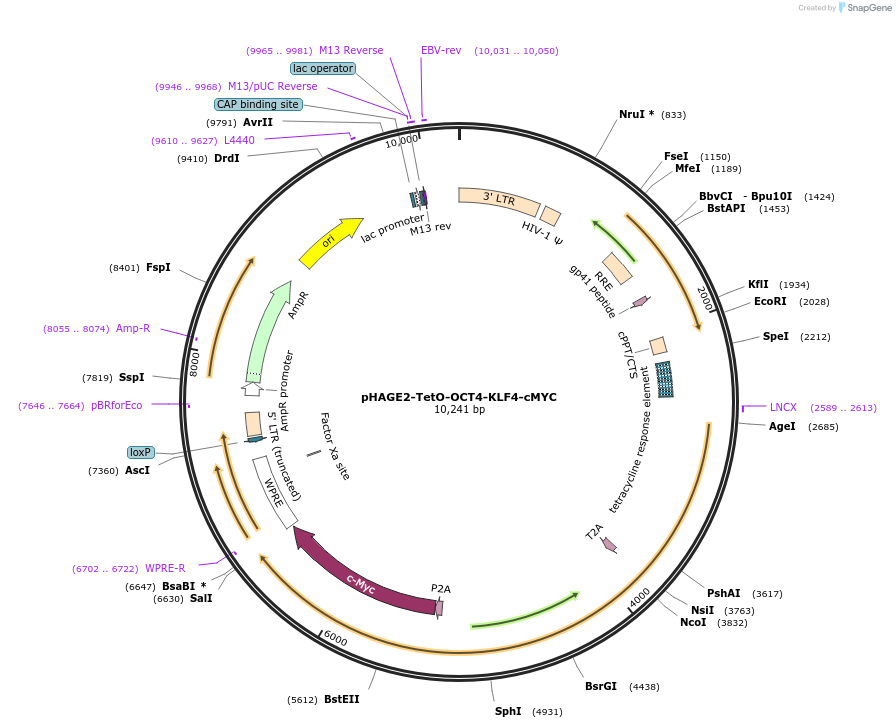pHAGE2-TetO-OCT4-KLF4-cMYC
(Plasmid
#216175)
-
PurposeGenerate lentiviruses encoding for OCT4, KLF4 and c-MYC (polycistronic vector); used in conjunction with SOX vectors for pluripotency reprogramming
-
Depositing Lab
-
Sequence Information
Ordering
| Item | Catalog # | Description | Quantity | Price (USD) | |
|---|---|---|---|---|---|
| Plasmid | 216175 | Standard format: Plasmid sent in bacteria as agar stab | 1 | $89 | |
Backbone
-
Vector backbonepHAGE2-TetO
-
Vector typeLentiviral
Growth in Bacteria
-
Bacterial Resistance(s)Ampicillin, 100 μg/mL
-
Growth Temperature37°C
-
Growth Strain(s)NEB Stable
-
Copy numberHigh Copy
Gene/Insert
Cloning Information
- Cloning method Restriction Enzyme
- 5′ cloning site Unknown (unknown if destroyed)
Resource Information
-
Supplemental Documents
Terms and Licenses
-
Academic/Nonprofit Terms
-
Industry Terms
- Not Available to Industry
Trademarks:
- Zeocin® is an InvivoGen trademark.
Depositor Comments
Encodes for a total of three genes: OCT4, KLF4, c-MYC
These plasmids were created by your colleagues. Please acknowledge the Principal Investigator, cite the article in which the plasmids were described, and include Addgene in the Materials and Methods of your future publications.
-
For your Materials & Methods section:
pHAGE2-TetO-OCT4-KLF4-cMYC was a gift from Ralf Jauch (Addgene plasmid # 216175 ; http://n2t.net/addgene:216175 ; RRID:Addgene_216175) -
For your References section:
An acidic residue within the OCT4 dimerization interface of SOX17 is necessary and sufficient to overcome its pluripotency-inducing activity. Ho SY, Hu H, Ho DHH, Renom APS, Yeung SW, Boerner F, Weng M, Hutchins AP, Jauch R. Stem Cell Reports. 2025 Mar 11;20(3):102398. doi: 10.1016/j.stemcr.2025.102398. Epub 2025 Feb 6. 10.1016/j.stemcr.2025.102398 PubMed 39919754



